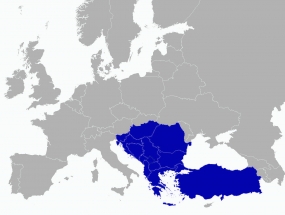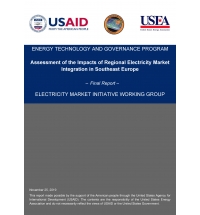Assessment of Benefits of Regional Electricity Market Integration in South East Europe
client: USEA, USAID
type: Analysis (Market, Transmission, Generation)
finishing date: October 2019 (February 2020)
team: Consortium EKC (Serbia) – EI Hrvoje Pozar (Croatia); EKC team: Dragana Orlic - Project Manager, B. Lekovic
The objective of this work is to analyze and quantify the benefits of electricity market integration in the SEE region with the focus on the wholesale day-ahead market.
To capture and project the impact of such integration, this project prepares a complex regional electricity market model that includes all existing and planned generating capacities in SEE with simplified representation of the transmission network. To model the neighboring ENTSO-E countries, as well as influence the pan-European electricity market, this project uses the official publicly available ENTSO-E data from the countries’ TYNDP (Ten Year Network Development Plan) and MAF (Midterm Adequacy Forecast).
The forecasting model focuses on the year 2025 with the aim to carry out hourly simulations of the power system operation, and provide results for each hour during the year (8760 values for each variable per year). With regional market model market integration analyses for several scenarios are performed and quantification of its implication on wholesale market prices, allocation of generation and generation costs, and cross-border electricity exchange is given.
Market model is developed in Antares software tool that enables probabilistic simulations of the power system operation based on day-ahead market principles.
At the end of the project, market models are transferred to EMI participants. Training sessions has been carried out with the aim to enable EMI members to further use developed models for their own purposes.
Type of services provided:
- Phase 1 – Development of the regional electricity market model
- Definition of relevant input data, preparation of questionnaire for participants
- Collection of data
- Creation of the regional market database in Excel and in Antares
- Phase 2 – Study of the benefits of regional market integration in SEE
- Defining the model methodology and assumptions
- Preparing scenarios and running simulations
- Analyzing results and preparing the final report
- Phase 3 – Training for EMI participant on using the Antares market model


